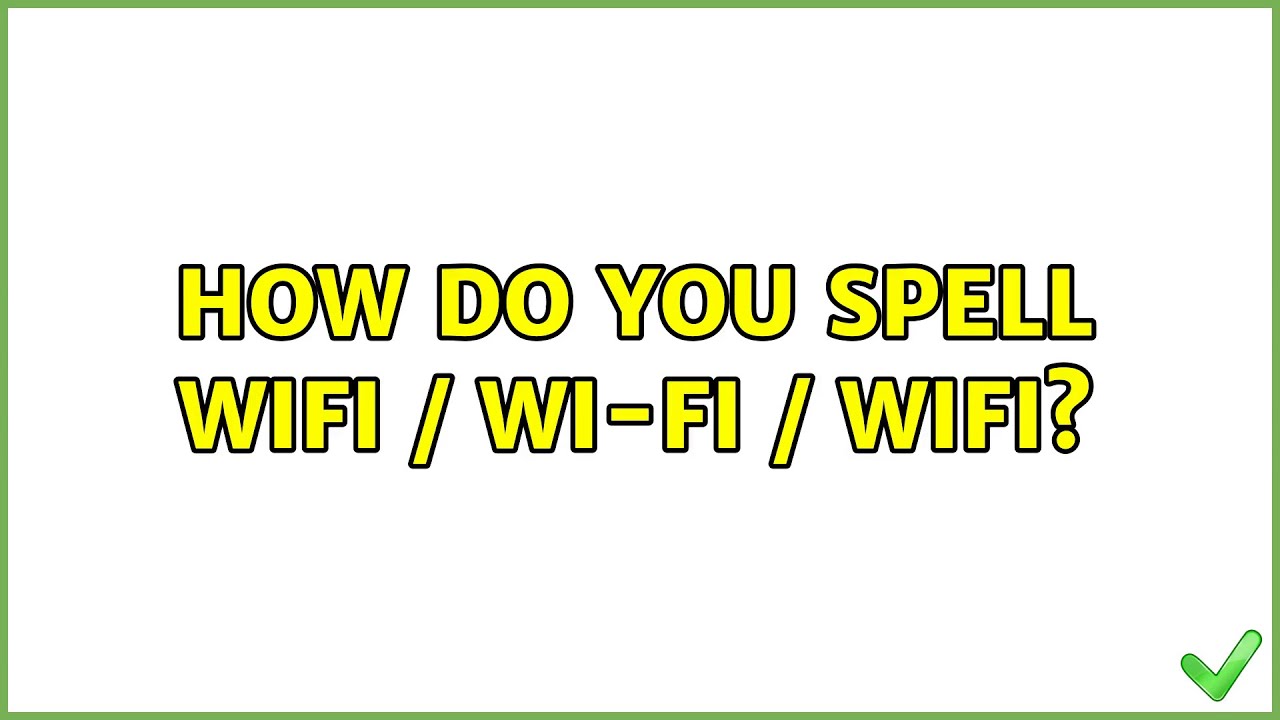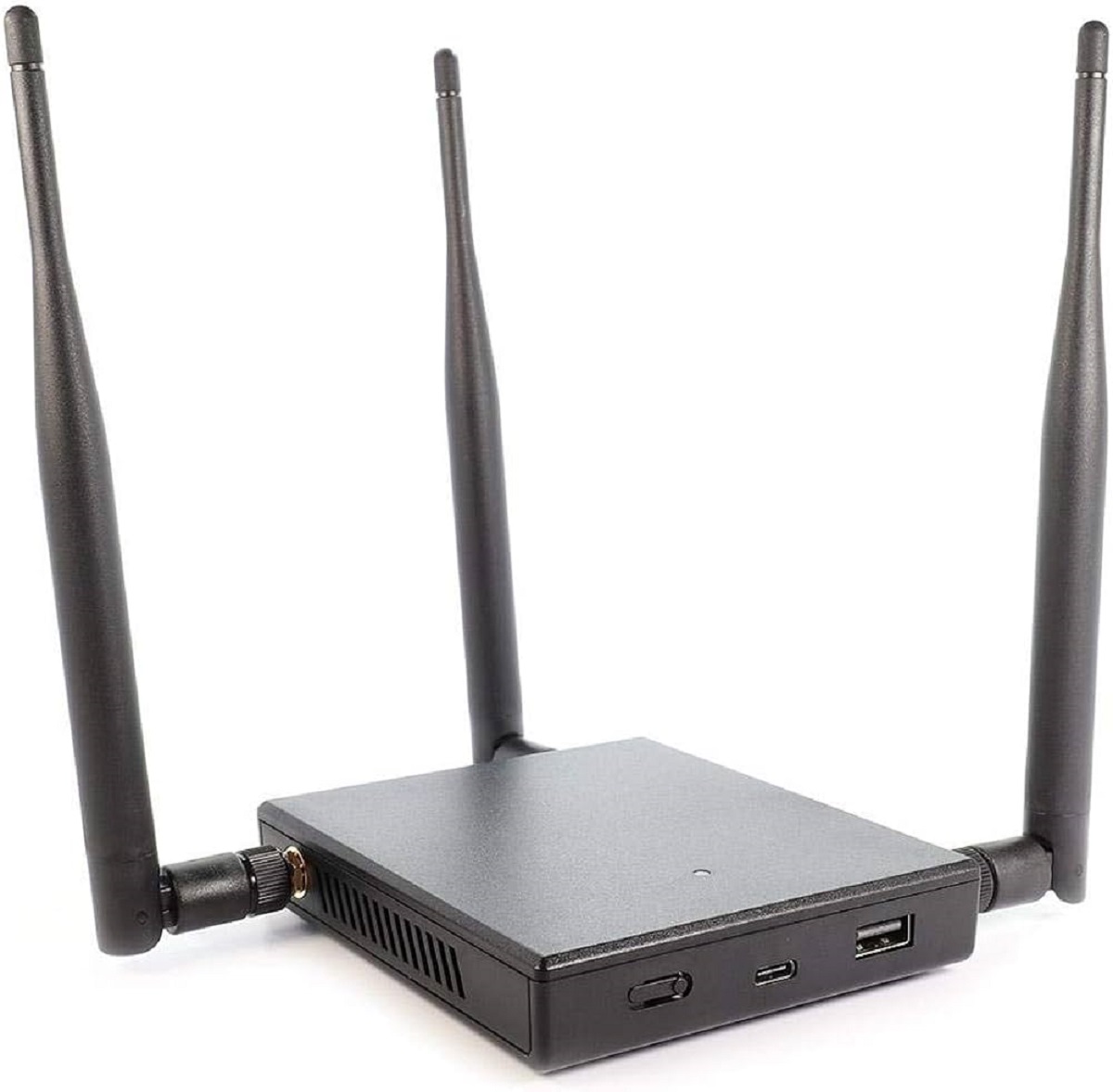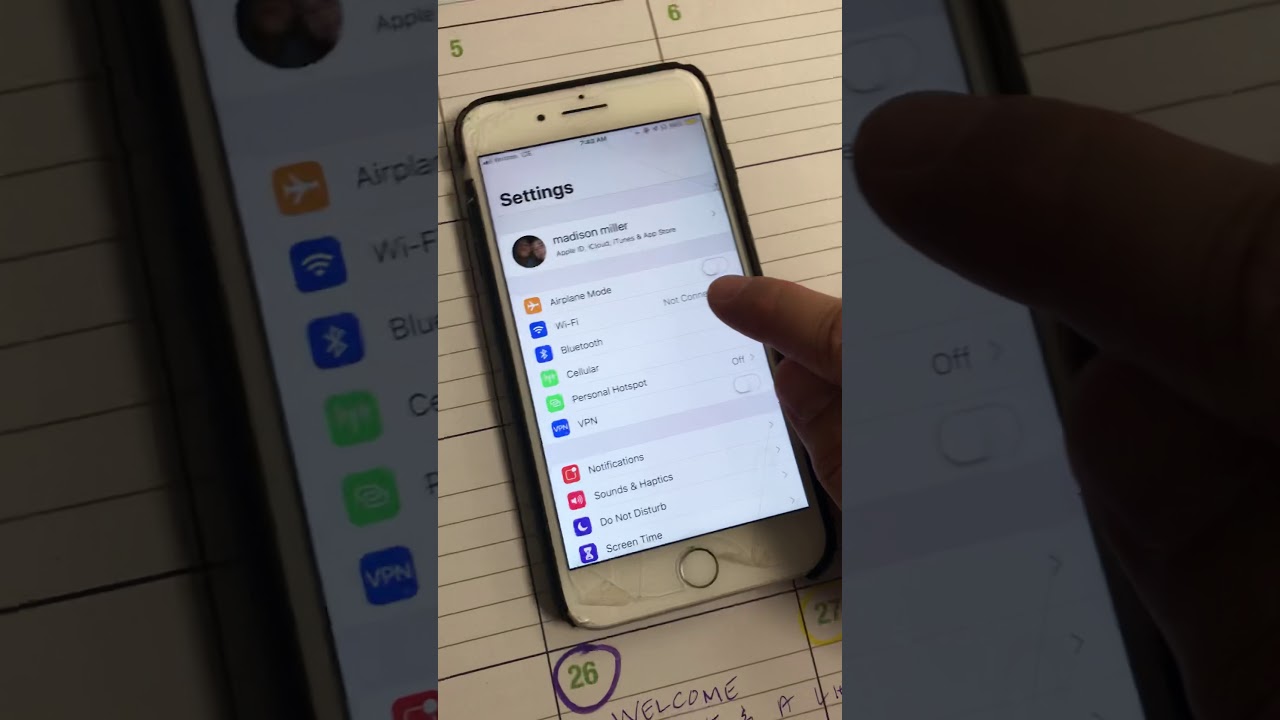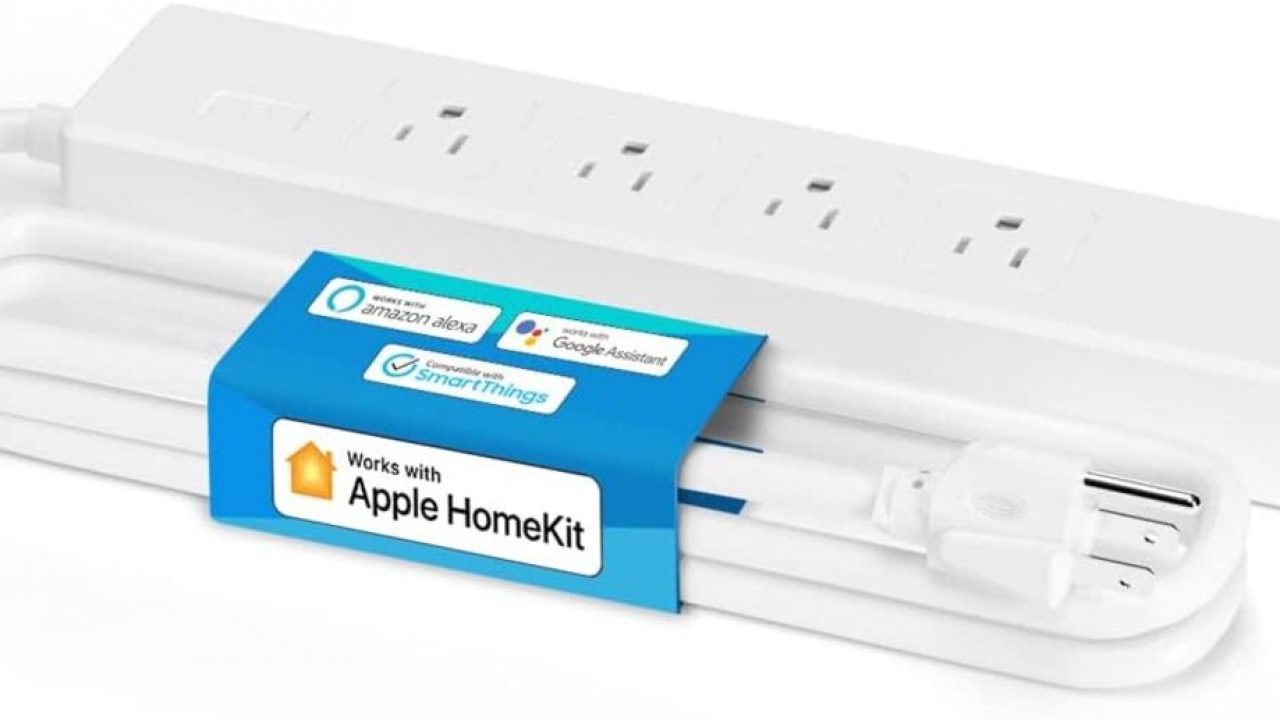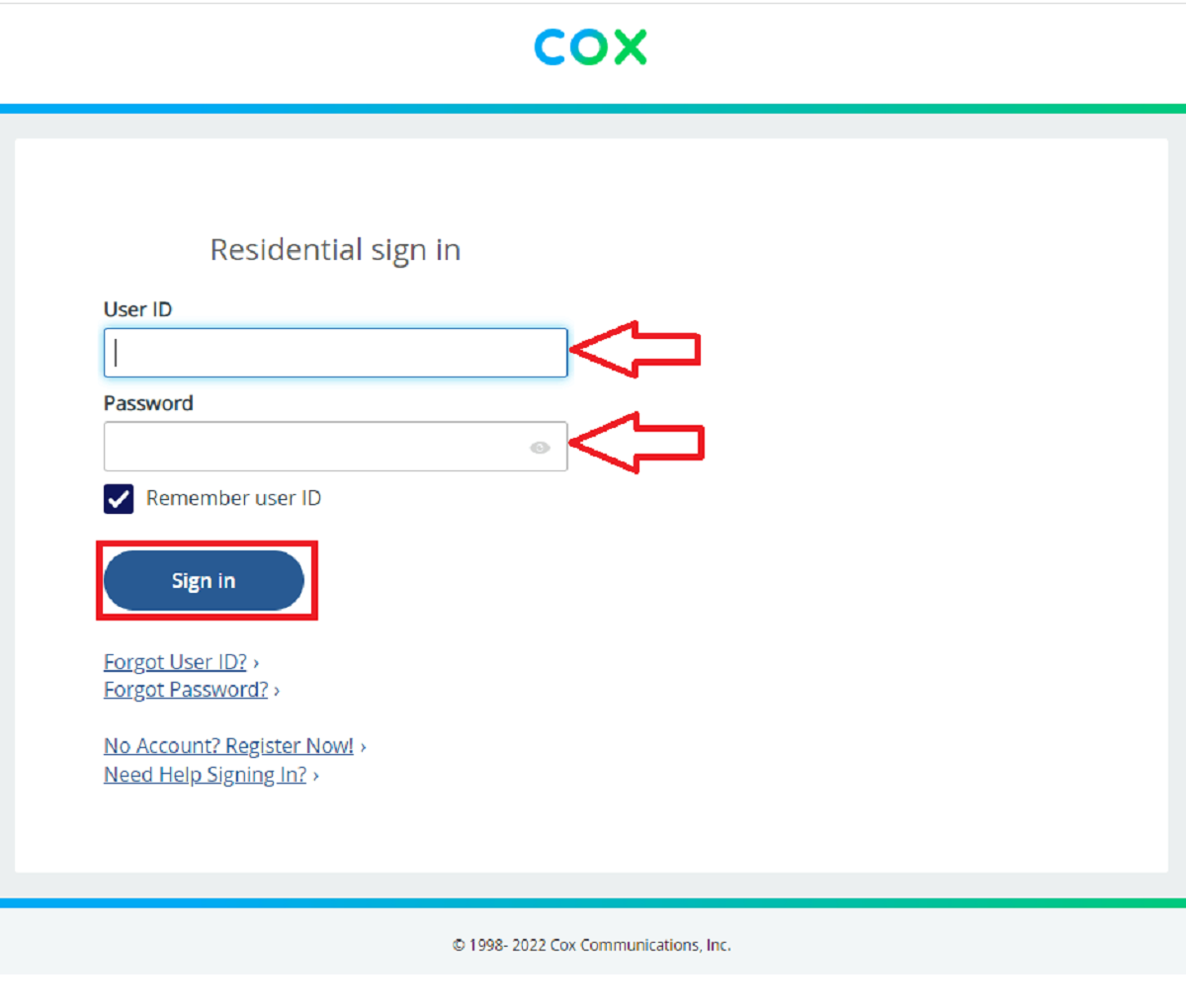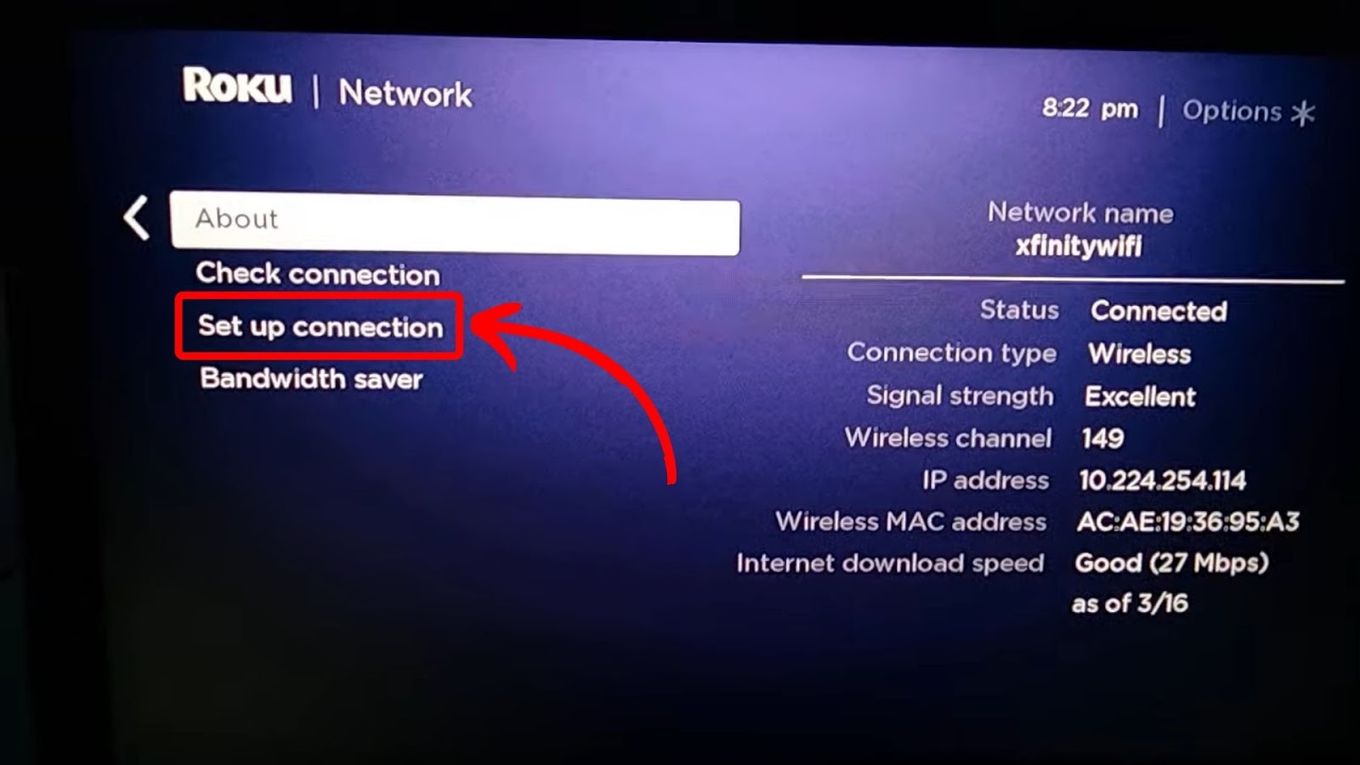Introduction
Wi-Fi has become an essential part of our daily lives. We rely on it to connect our devices, stream videos, send emails, and stay connected with friends and family. But have you ever wondered how to spell this ubiquitous term? In this article, we will explore the correct spelling of Wi-Fi and delve into its origins and meaning.
Wi-Fi, short for “Wireless Fidelity,” has become synonymous with wireless internet. It has revolutionized the way we access information and communicate, providing us with the freedom to connect without the hassle of wires. However, despite its widespread usage, many people still struggle with the correct spelling of this term.
Considering the prevalence of Wi-Fi in our daily lives, it’s essential to get the spelling right. Misspelling it can lead to confusion and misunderstandings. Whether you’re writing an email, a blog post, or a social media update, knowing the correct spelling of Wi-Fi is crucial to maintaining a professional image.
In the following sections, we will explore the origins and meaning of Wi-Fi, examine some common misspellings, and provide tips on how to remember the correct spelling of this widely used term. So, let’s dive in and unravel the mysteries of Wi-Fi spelling!
The Origins of Wi-Fi
Wi-Fi technology has become an integral part of our connected world, but do you know how it originated? The roots of Wi-Fi can be traced back to the 1980s and a visionary named Dr. Vic Hayes. As the chairman of the IEEE 802.11 standards committee, Dr. Hayes played a critical role in the development and standardization of wireless networking technologies.
The term “Wi-Fi” itself was coined by a branding company called Interbrand in 1999 on behalf of the Wi-Fi Alliance. It was meant to be a catchy and marketable name for the IEEE 802.11 standard. The analogy behind the name was to draw a connection between Hi-Fi (high fidelity) audio systems and wireless fidelity, emphasizing the goal of delivering high-quality wireless connectivity.
The IEEE 802.11 standard, first introduced in the early 1990s, laid the foundation for wireless networking. It defined the specifications for wireless communication using radio waves, allowing devices to connect and transmit data without the need for physical cables.
Initially, Wi-Fi technology was primarily used in corporate and academic settings. However, with advancements in technology and increased demand for wireless connectivity, Wi-Fi quickly found its way into homes, cafes, airports, and other public spaces. Today, there is Wi-Fi practically everywhere we go.
Over the years, Wi-Fi technology has evolved and improved, with each new generation bringing faster speeds, better coverage, and more efficient data transfer. The Wi-Fi Alliance, a global organization dedicated to advancing Wi-Fi technologies, has played a crucial role in ensuring compatibility and interoperability among different devices and manufacturers.
The widespread adoption of Wi-Fi has not only transformed the way we access the internet but has also revolutionized industries such as telecommunications, education, healthcare, and entertainment. The ability to connect wirelessly has opened up new possibilities for innovation and productivity.
From its humble beginnings in the 1980s to its ubiquitous presence today, Wi-Fi has undoubtedly changed the world in remarkable ways. Its impact on our lives cannot be overstated, and it continues to evolve and adapt to meet the ever-increasing demand for fast and reliable wireless connectivity.
The Meaning of Wi-Fi
Wi-Fi has become a household term, but have you ever stopped to think about its actual meaning? Wi-Fi, short for “Wireless Fidelity,” refers to a technology that allows electronic devices to connect to the internet and communicate wirelessly using radio waves.
When we say that a device is “Wi-Fi-enabled” or that we are connecting to a Wi-Fi network, it means that we are utilizing this wireless technology to access the internet or to transfer data between devices without the need for physical cables.
Wi-Fi operates on the principles of radio frequency (RF) technology, utilizing certain frequency bands to transmit and receive data. It provides a convenient and flexible way to connect multiple devices simultaneously, such as smartphones, laptops, tablets, smart home devices, and more, to a network or the internet.
One of the key features of Wi-Fi is its ability to create a local area network (LAN). This allows devices within the network to communicate with each other and share resources, such as printers, files, and media. Wi-Fi also enables internet connectivity by connecting to a modem or a router that provides access to the wider internet.
Wi-Fi technology has evolved over the years, introducing various standards to improve speed, range, and security. The different generations of Wi-Fi, such as 802.11b, 802.11g, 802.11n, 802.11ac, and the latest 802.11ax, have brought significant advancements, enabling faster and more reliable wireless connections.
While Wi-Fi is often used interchangeably with the term “wireless internet,” it’s important to note that Wi-Fi refers specifically to the technology that allows devices to connect and communicate wirelessly, whereas wireless internet refers to the access to the internet via a wireless connection.
It’s worth mentioning that Wi-Fi should not be confused with cellular data or mobile data, which allows devices to connect to the internet through cellular networks provided by mobile service providers. Wi-Fi typically offers faster and more stable connections compared to cellular data, especially in areas with robust Wi-Fi infrastructure.
Overall, Wi-Fi has become an integral part of our digital lives, enabling us to stay connected and access information seamlessly. Its convenience, flexibility, and widespread adoption have significantly transformed the way we work, communicate, and entertain ourselves in the modern world.
Common Misspellings of Wi-Fi
Wi-Fi is a term that is widely used, but it’s surprising how often it gets misspelled. With its unique combination of letters and hyphen, it’s understandable that people may struggle with the correct spelling. Let’s explore some of the most common misspellings of Wi-Fi:
- Wifi: One of the most common misspellings is dropping the hyphen and writing it as “wifi.” While it may seem like a minor mistake, it’s important to remember that the correct spelling includes the hyphen.
- WIFI: Some people capitalize every letter in Wi-Fi, writing it as “WIFI.” However, Wi-Fi should only have the “W” capitalized, as it is an acronym for “Wireless Fidelity.”
- WiiFi: This misspelling often occurs due to confusion with the popular Nintendo gaming console, Wii. However, it is essential to note that Wi-Fi and Wii are separate entities, and they should not be mixed up.
- WyFy: This misspelling could be attributed to phonetic confusion. However, it is important to remember that the correct spelling is Wi-Fi, not “WyFy.”
These are just a few examples of common misspellings, but there may be other variations that people use mistakenly. It’s worth emphasizing that using the correct spelling of Wi-Fi is essential for clear communication and professional writing. Misspelling it can lead to confusion and may not be seen as credible in certain contexts, such as business communications or academic writing.
Fortunately, with increased exposure and awareness of the correct spelling, the incidences of these misspellings are decreasing. Nevertheless, it’s always good to double-check and ensure that you are using the proper spelling “Wi-Fi” in your writings and communications.
The Correct Spelling of Wi-Fi
The correct spelling of “Wi-Fi” is a topic that often causes confusion and misspellings. To clarify any uncertainties, let’s reaffirm the proper spelling of Wi-Fi:
The term “Wi-Fi” is spelled with a hyphen (“-“) between “Wi” and “Fi”. The hyphen is crucial as it distinguishes the two components and indicates that they are combined to form a single term. Omitting the hyphen is one of the most common errors when spelling Wi-Fi.
It’s important to note that “Wi” is not an abbreviation for “wireless.” Instead, it is derived from “Wireless Fidelity,” which emphasizes the intention to deliver high-quality wireless connectivity. This full form further solidifies the importance of the hyphen in “Wi-Fi.”
When writing Wi-Fi, it is important to capitalize the “W” and the “F.” The “W” stands for wireless, while the “F” represents fidelity. Capitalizing these letters maintains consistency with the official term and reflects its acronymic origin. Writing “Wifi” or “wifi” with lowercase letters is incorrect and should be avoided.
In modern language usage, “Wi-Fi” has become more widely recognized than “Wireless Fidelity.” Therefore, when referring to wireless internet connectivity, it is generally sufficient to use the term “Wi-Fi” alone. While “Wireless Fidelity” is the full form, more commonly, people simply refer to it as “Wi-Fi.”
It’s important to be conscious of using the correct spelling whenever you write about or mention Wi-Fi. Writing it as “Wifi” or any other variation not only goes against the established standard but also risks miscommunication and confusion.
As with any term or word, correct spelling not only demonstrates attention to detail but also adds credibility and professionalism to your writing. By using the proper spelling of Wi-Fi, you convey a strong command of language and stay in line with the widely recognized and accepted norm.
So, the next time you write about wireless connectivity or mention Wi-Fi in your conversations and written communications, be sure to remember the hyphen and capitalize the “W” and “F”. Keeping these guidelines in mind will ensure that you consistently spell Wi-Fi correctly and effectively convey your message.
Tips for Remembering the Spelling of Wi-Fi
Remembering the correct spelling of Wi-Fi can sometimes be a challenge, given its unique combination of letters and hyphen. However, with a few simple tips, you can easily commit the correct spelling to memory:
- Hyphenate and capitalize: The hyphen and capital letters are essential components of the spelling. Visualize the hyphen between “Wi” and “Fi,” and remember to capitalize the “W” and “F.” This mental image will help reinforce the correct spelling of Wi-Fi.
- Think “Wireless Fidelity”: Although the term “Wi-Fi” is more commonly used, remembering that it stands for “Wireless Fidelity” can help reinforce the importance of the hyphen. Associate the hyphen with the idea of combining “Wi” and “Fi” to form the term “Wireless Fidelity.”
- Recite it aloud: Saying the word aloud repeatedly can help solidify the correct spelling in your mind. Hearing the correct pronunciation and rhythm of “Wi-Fi” can enhance your memory of its spelling.
- Visualize the logo or symbol: The Wi-Fi logo or symbol, consisting of a stylized signal icon intersecting with wave-like lines, is a familiar image. Visualize this symbol in your mind when recalling the spelling of Wi-Fi. The combination of the logo with the hyphenated spelling can strengthen your memory of the correct spelling.
- Practice using it: Incorporate the correct spelling of Wi-Fi in your writing and conversations whenever appropriate. By actively using the correct spelling, you reinforce it in your memory and reduce the likelihood of making spelling errors.
By employing these tips, you can enhance your ability to remember and consistently use the correct spelling of Wi-Fi. Whether you’re writing an email, drafting a document, or engaging in a conversation about wireless connectivity, these mnemonic devices will be valuable in preventing common spelling mistakes.
It’s worth noting that while “Wi-Fi” is the universally accepted spelling, it’s always a good practice to double-check your spelling when in doubt. Proofreading your work and using spell-checking tools can help catch any inadvertent misspelling and ensure accuracy.
With practice and conscious effort, remembering the correct spelling of Wi-Fi will become second nature. As you continue to use the term in your daily life, you’ll build confidence in your ability to spell it correctly and avoid any misspellings.
Conclusion
Wi-Fi, the revolutionary wireless technology that has transformed the way we connect and communicate, is a term that carries significant importance in our modern lives. Ensuring that we spell Wi-Fi correctly is essential for effective communication and maintaining a professional image.
In this article, we explored the origins and meaning of Wi-Fi, delved into common misspellings, and provided tips for remembering the correct spelling. Understanding the history of Wi-Fi, its role in wireless connectivity, and the significance of the hyphen and capitalization can help us consistently spell it accurately.
Remember, Wi-Fi is spelled with a hyphen (“-“) and with the “W” and “F” capitalized. This spelling distinguishes it from other variations and aligns with the official term. Avoid common misspellings such as “wifi,” “WIFI,” or any other variations that deviate from the standard spelling.
By employing mnemonic devices such as visualizing the hyphen, associating Wi-Fi with “Wireless Fidelity,” reciting it aloud, visualizing the logo, and practicing its use, we can enhance our ability to remember the correct spelling of Wi-Fi.
Spelling Wi-Fi correctly not only demonstrates attention to detail but also adds credibility and professionalism to our writing and conversations. It ensures clear communication and prevents confusion in various contexts, from business communications to academic writings.
Next time you write about or mention Wi-Fi, do so with confidence, knowing that you have the knowledge and tips to spell it correctly. Let’s continue to embrace and utilize Wi-Fi’s convenience and power while respecting its proper spelling.
So, whether you are writing an email, conducting research, or simply engaging in a conversation about the wonders of wireless connectivity, remember to spell it correctly – Wi-Fi!







